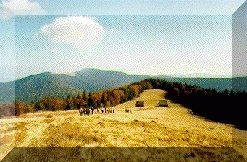

Gorce National Park
 Apart from Turbacz, the Park contains also other highest mountains of the Gorce range: Jaworzyna Kamienicka (1,288 m a.s.l), Kiczora (1,282 m a.s.l.), Kudłon (1,279 m a.s.l.), and Gorc Kamienicki (1,228 m a.s.l.), as well as the Front of Turbacz.
Apart from Turbacz, the Park contains also other highest mountains of the Gorce range: Jaworzyna Kamienicka (1,288 m a.s.l), Kiczora (1,282 m a.s.l.), Kudłon (1,279 m a.s.l.), and Gorc Kamienicki (1,228 m a.s.l.), as well as the Front of Turbacz.